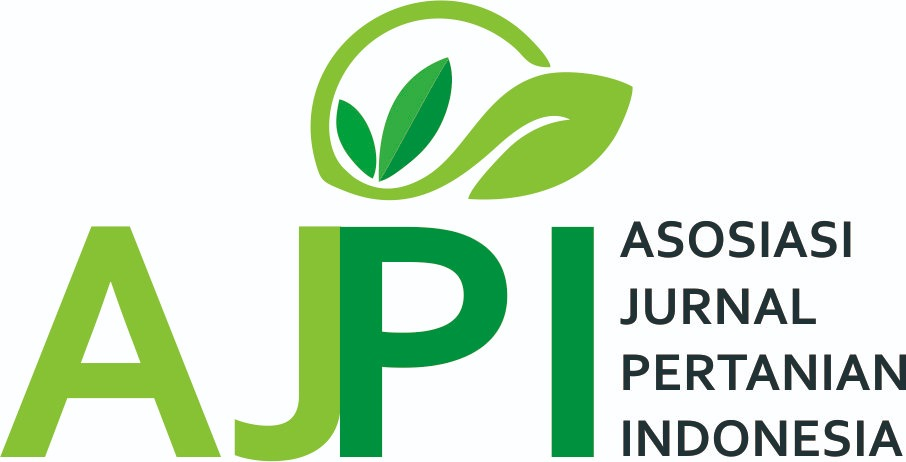POTENSI BAKTERI Bacillus spp. DALAM MENGHAMBAT Colletotrichum capsici PENYEBAB ANTRAKNOSA PADA CABAI MERAH SECARA IN VITRO
DOI:
https://doi.org/10.33005/plumula.v10i1.117Keywords:
agens hayati, antraknosa, Colletotrichum capsici, Bacillus sp., cabai merahAbstract
Colletotrichum capsici merupakan jamur patogen penting penyebab penyakit antraknosa pada cabai merah. Salah satu upaya untuk mengatasi permasalahan ini yaitu dengan penggunaan agens hayati bakteri Bacillus spp.. Penelitian ini bertujuan untuk mengetahui potensi lima isolat bakteri Bacillus spp. yaitu Ba-6, Ba-9, Ba-12, Ba-15, dan Ba-17 dalam menghambat patogen C. capsici Penelitian laboratorium dilakukan menggunakan Rancangan Acak Lengkap dengan 4 ulangan. Pengujian in vitro dilakukan dengan teknik dual culture pada media PDA dan detach fruit test pada buah cabai.Hasil penelitian menunjukkan efektifitas perhambatan C. capsici paling baik pada pengujian in vitro media PDA yaitu Bacillus sp. isolat Ba-9 dengan penghambatan sebesar 23,04%. Selanjutnya dalam uji detach fruit, Bacillus sp. isolat Ba-9 mampu menekan pertumbuhan C. capsici sebesar 21,25% dibandingkan kontrol.
Downloads
Downloads
Published
How to Cite
Issue
Section
License
Copyright (c) 2022 Sasiska Rani

This work is licensed under a Creative Commons Attribution 4.0 International License.
Authors who publish with this journal agree to the following terms:
- Authors retain copyright and grant the journal right of first publication with the work simultaneously licensed under a Creative Commons Attribution License that allows others to share the work with an acknowledgement of the work's authorship and initial publication in this journal.
- Authors are able to enter into separate, additional contractual arrangements for the non-exclusive distribution of the journal's published version of the work (e.g., post it to an institutional repository or publish it in a book), with an acknowledgement of its initial publication in this journal.
- Authors are permitted and encouraged to post their work online (e.g., in institutional repositories or on their website) prior to and during the submission process, as it can lead to productive exchanges, as well as earlier and greater citation of published work (See The Effect of Open Access).











